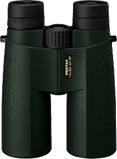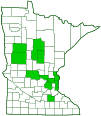Dung beetles
(Subfamily Scarabaeinae)
Overview • Description • Distribution • Taxonomy

Overview
Scarabaeinae is a very large subfamily of scarab beetles known as dung beetles. There are 7,077 currently recognized Scarabaeinae species in 287 genera worldwide.
Scarabaeinae are beneficial insects, not just for their removal and burial of dung. By burying, tunneling, or rolling dung, they transfer it below the soil. This increases micro-organism activity, producing chemical changes in the soil that results in increased plant height and leaf production. Where livestock are raised, they suppress dung flies and nematodes, thereby increasing livestock productivity and saving cattle farmers in North America about 380 million dollars a year.
Most Scarabaeinae feed exclusively on dung. After mating, a pair will tunnel into the soil to create a nest, provision it with balls of dung, and lay eggs in the dung balls.
Description
Worldwide, Scarabaeinae range in size from very small to very large. Adults are 1⁄16″ to 2⅜″ (2 to 60 mm) in length. The largest dung beetle in North America is Carolina dung beetle (Dichotomius carolinus), which is ¾″ to 1 3⁄16″ (20 to 30 mm) in length.
Most Scarabaeinae are dull black.
The antenna club is smooth or sparsely hairy.
The last segment of the abdomen (pygidium) is partly exposed, not covered by the hardened wing covers (elytra). The triangular plate between the wing bases (scutellum) is usually not visible.
The hind legs are placed far back on the abdomen, nearer to the tip of the abdomen than to the middle legs, or about the same distance. On the hind legs, the fourth segment (tibia) has only one spur at the tip.
Distribution |
|||
|
Sources |
||
| 10/19/2025 | |||
Taxonomy
Order
Coleoptera (Beetles)
Suborder
Polyphaga (Water, Rove, Scarab, Long-horned, Leaf, and Snout Beetles)
Infraorder
Scarabaeiformia
Superfamily
Scarabaeoidea (Scarabs, Stag Beetles, and Allies)
Family
Scarabaeidae (scarabs)
Subordinate Taxa
Tribe Ateuchini ![]()
Tribe Coprini ![]()
![]()
Tribe Deltochilini ![]()
![]()
Tribe Epilissini
Tribe Epirinini
Tribe Eucraniini
Tribe Eurysternini
Tribe Gymnopleurini
Tribe Oniticellini ![]()
Tribe Onitini ![]()
Tribe Onthophagini ![]()
![]()
Tribe Parachoriini
Tribe Phanaeini ![]()
![]()
Tribe Scarabaeini ![]()
Tribe Sisyphini (spindly-leg dung beetles) ![]()
Synonyms
Common Names
dung beetles
Glossary
Elytra
The hardened or leathery forewings of beetles used to protect the fragile hindwings, which are used for flying. Singular: elytron.
Scutellum
The exoskeletal plate covering the rearward (posterior) part of the middle segment of the thorax in some insects. In Coleoptera, Hemiptera, and Homoptera, the dorsal, often triangular plate behind the pronotum and between the bases of the front wings. In Diptera, the exoskeletal plate between the abdomen and the thorax.
Tibia
The fourth segment of an insect leg, after the femur and before the tarsus (foot). The fifth segment of a spider leg or palp. Plural: tibiae.
Visitor Photos
Share your photo of this insect.
This button not working for you?
Simply email us at info@MinnesotaSeasons.com.
Attach one or more photos and, if you like, a caption.
AK |
||
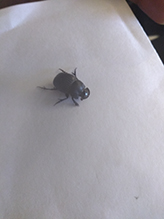 |
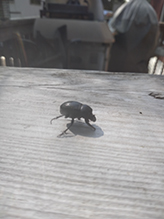 |
|
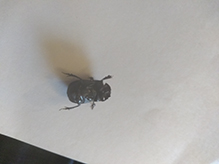 |
||
Mary Nasvik |
 |
MinnesotaSeasons.com Photos
|

Slideshows
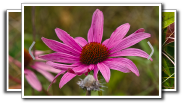
Visitor Videos
Share your video of this insect.
This button not working for you?
Simply email us at info@MinnesotaSeasons.com.
Attach a video, a YouTube link, or a cloud storage link.
Katie Sandberg
dung beetle Scarabaeinae 01
6/8/2019
Other Videos

Visitor Sightings
Report a sighting of this insect.
This button not working for you?
Simply email us at info@MinnesotaSeasons.com.
Be sure to include a location.
Katie Sandberg
6/6/2019
Location: Glendalough State Park
I spotted 3 different pairs of dung beetles while biking Glendalough's bike trails. This was my first time seeing them.
MinnesotaSeasons.com Sightings
